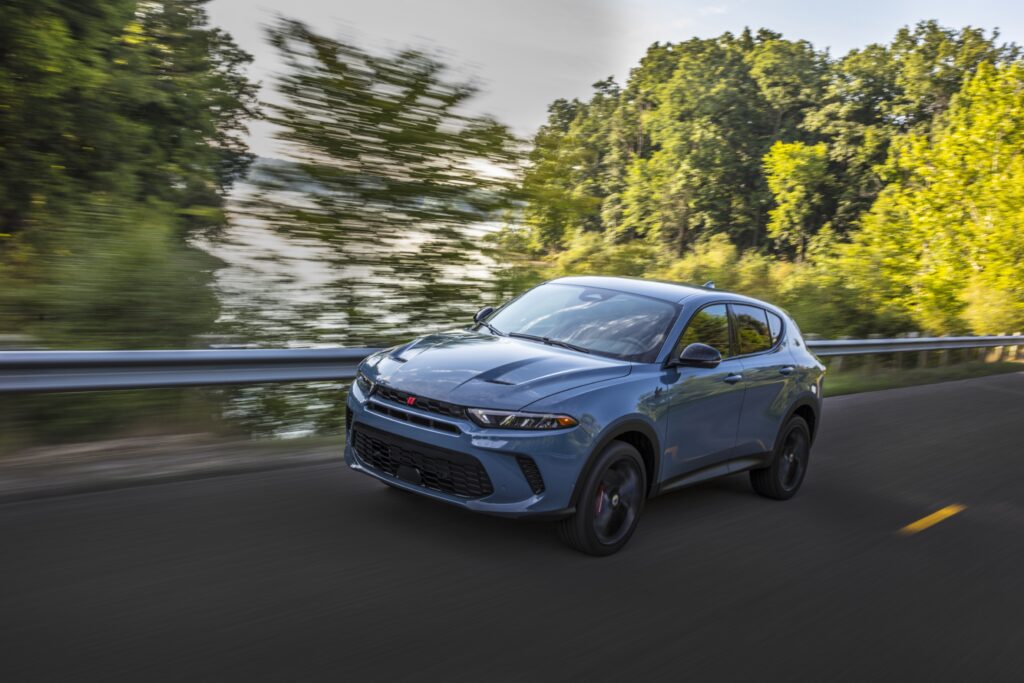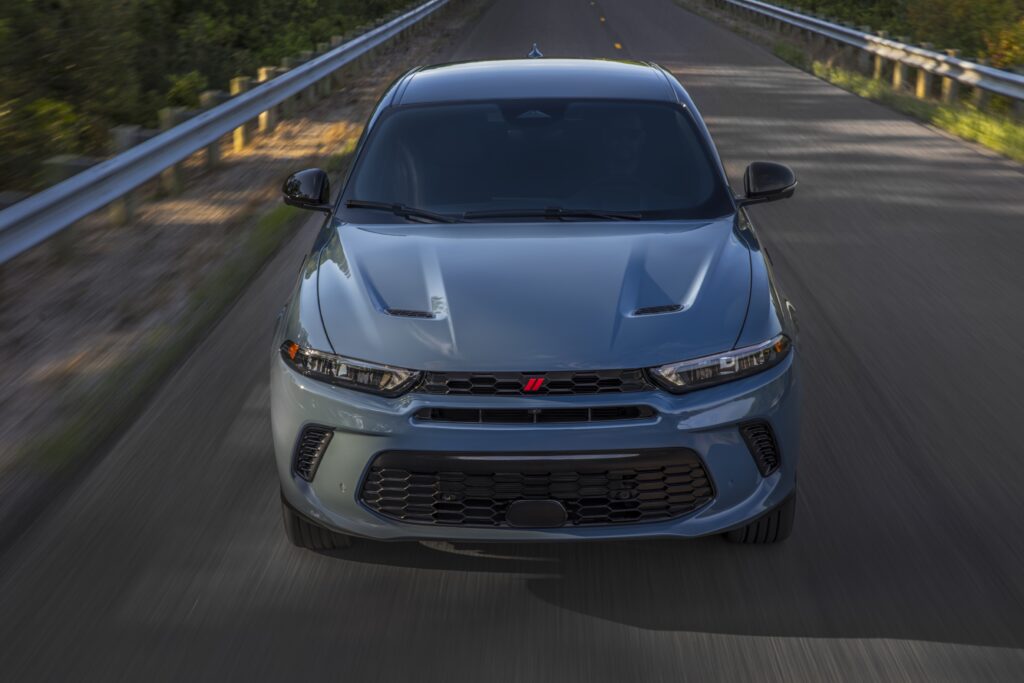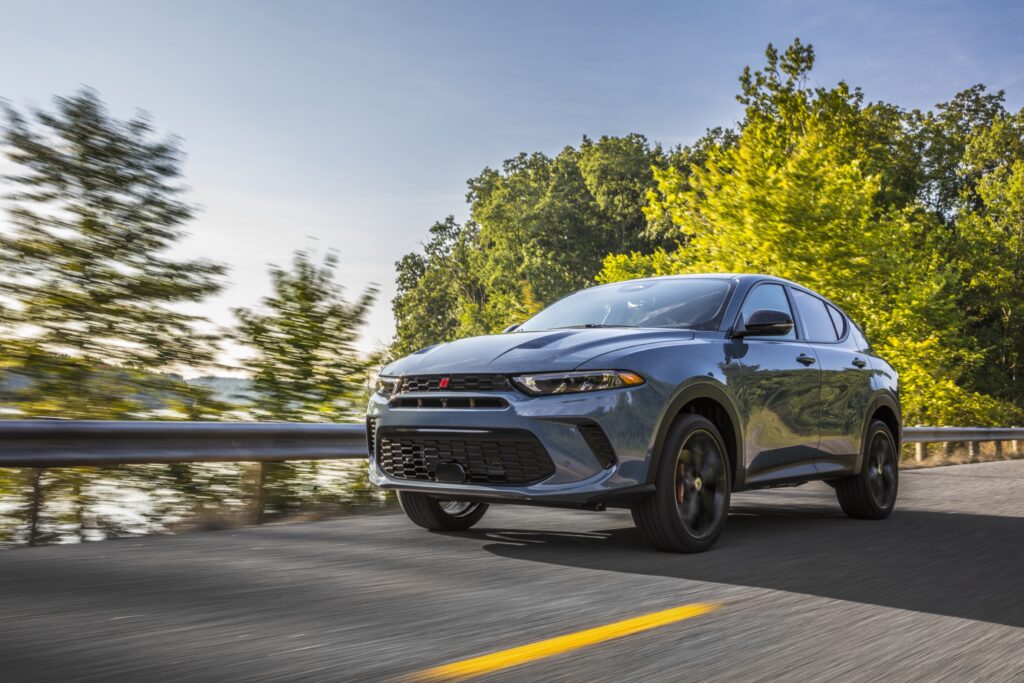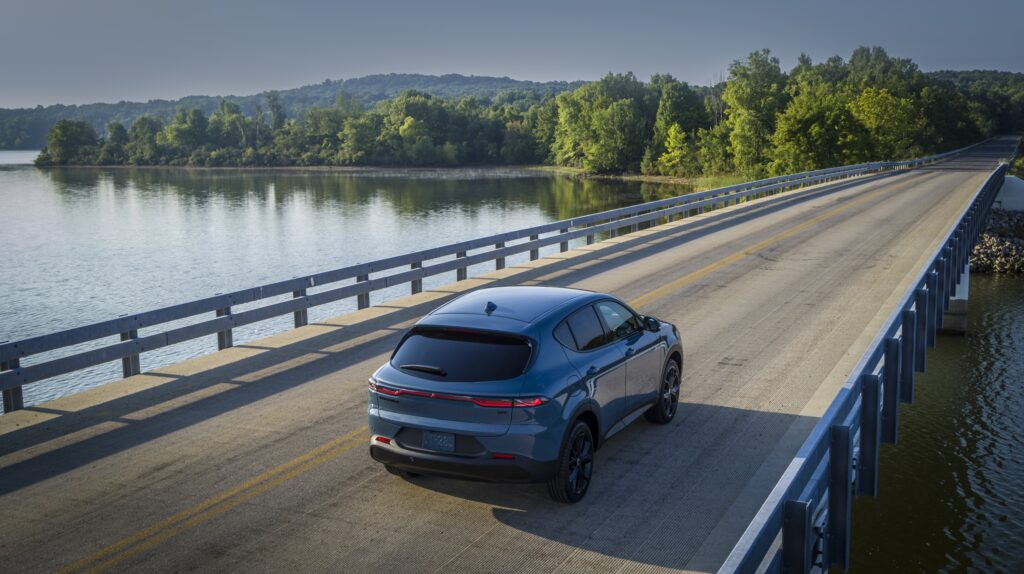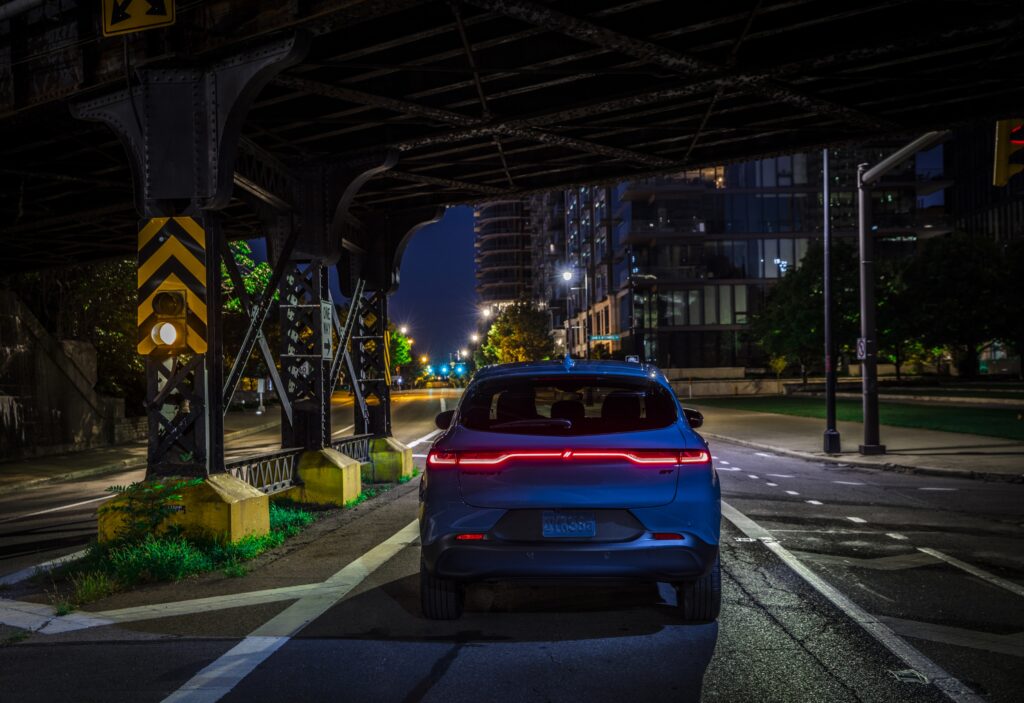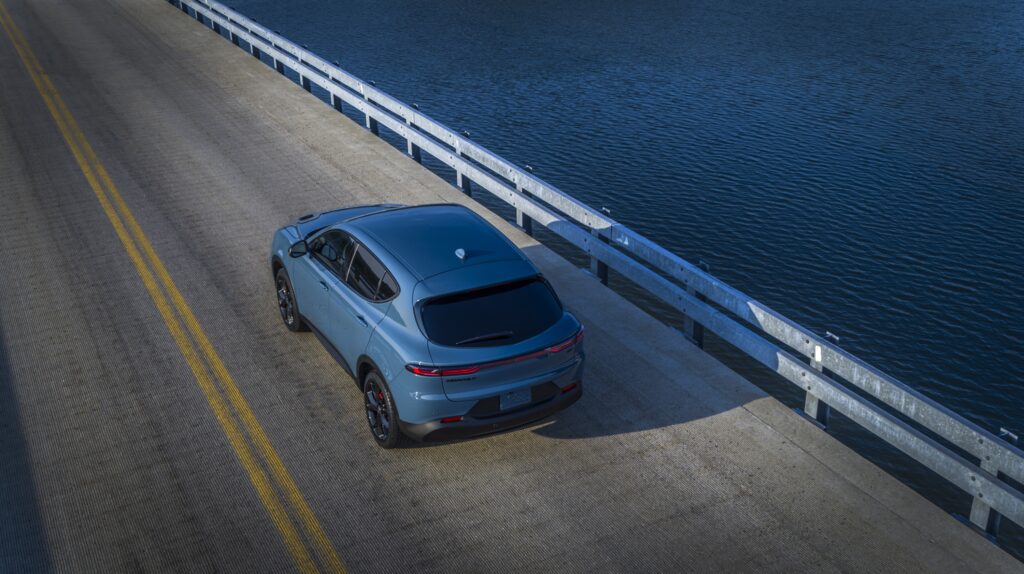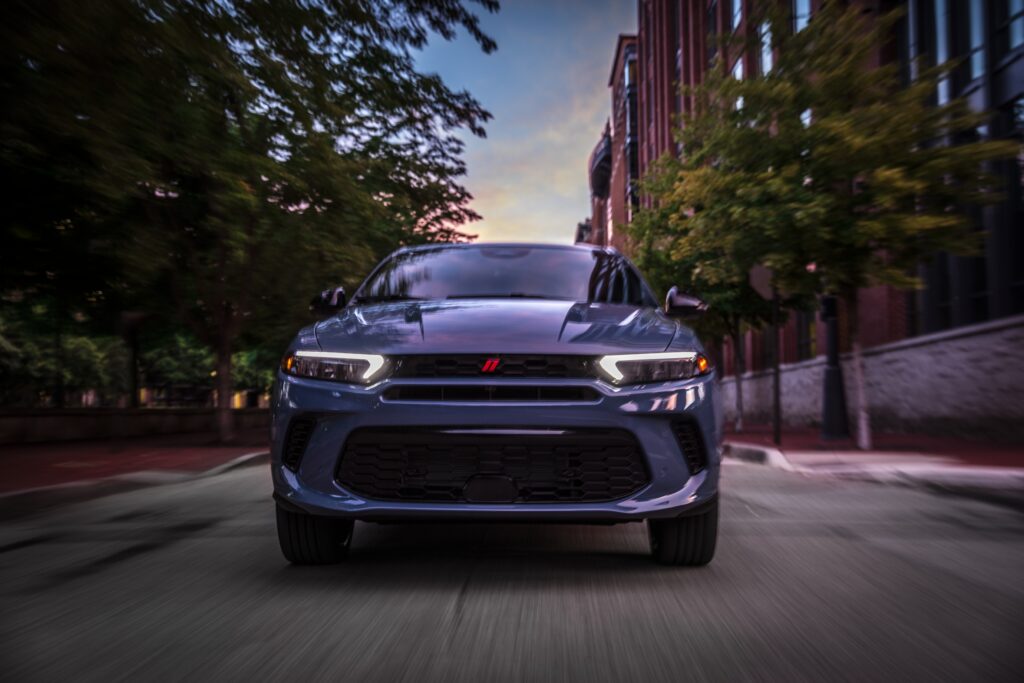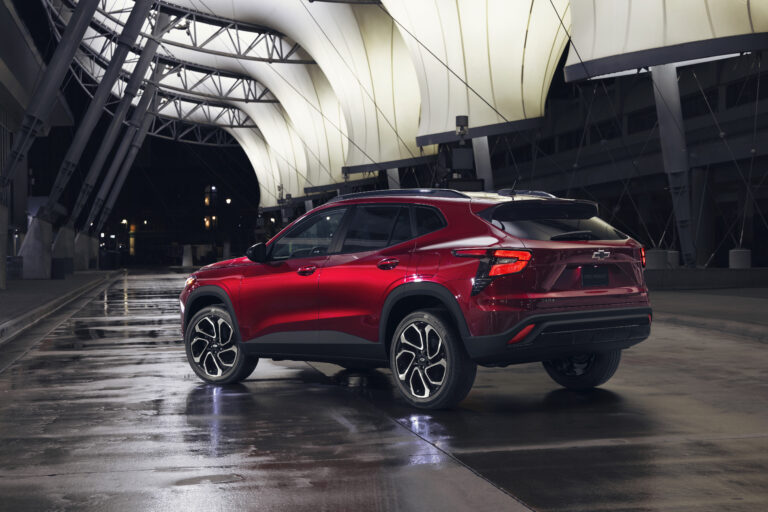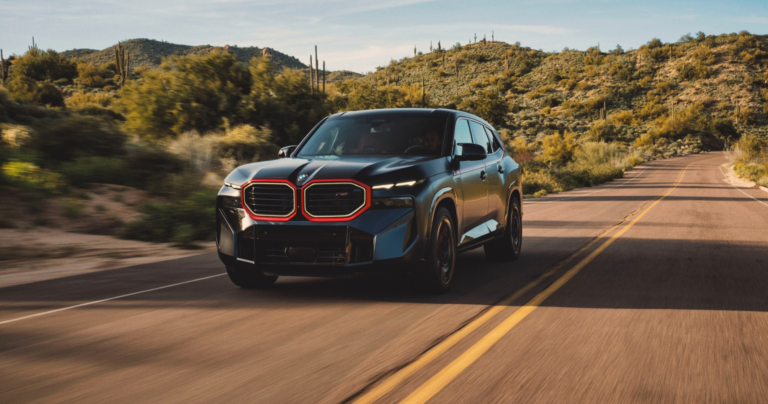
As Dodge rounds up the last of their high powered muscle cars, a new light shines on top of the American brand. A couple of days ago the company announced the “Last Call” of the V8 propelled Challenger and Charger, releasing several final variants of the acclaimed duo. Now, the spotlight sits on Dodge’s new phase: electrification. A brand once fighting against the plug has found itself on the side of many, on the path to create electric vehicles as regulations and consumer demands shift further away from internal combustion engines. Despite such a cosmic shift in brand orientation, the rowdy kids from Detroit haven’t forgotten their roots.
Enter the new Dodge Hornet. A namesake taken from a muscle car of old– the AMC Hornet, the new one is a subcompact SUV that’s performance orientated. Based on the Alfa Romeo Tonale, the Hornet will come in two distinct powertrain options: the R/T’s plug-in hybrid, or the GT’s 2.0 L 4-cylinder. Before anyone writes any hate mail to Dodge voicing their displeasure for falling in with the rest of the bland and boring CUV pack we think it’s important to look at the numbers. Mass market appealing or not, Dodge is Dodge. This is a crossover coming from the same people who slapped 800+ horsepower into a family sedan. The GT’s 4 banger will tote out 265 horsepower and 295 lb-ft of torque… in a vehicle that competes with the Hyundai Kona… Dodge never ceases to amaze so you can put down the pen. The plug in version stings just a bit more with a 20 horsepower bump to 285 horses and a whopping 383 lb-ft of instant torque powered by the initial electric drivetrain. The plug-in uses a 1.3 L turbo 4-shooter as well, but paired with an electric motor at the rear, essentially making the R/T RWD based on an AWD platform.
Dodge is adamant that the Hornet is the enthusiast’s entrance into the electrified automotive world, marketing it as a performance geared vehicle. Sans the hybrid powertrain, the 100% gas powered GT gets to 60 mph in 6.5 seconds. It inches out its competitors with the Kia Seltos and the Ford Escape sprinting in 6.9 and 8.0 seconds respectively. The PHEV version has a unique “PowerShot” feature which lets loose a “sting” of 25 extra horsepower, which Dodge says will shave a hefty second off the R/T’s 0-60 bringing it to 6.1 seconds. That’s 7.1 seconds regularly for you non-math nerds out there. Compared to other CUVs in the segment though, the Hornet falters. The Toyota RAV4 Prime ran the 60 in 5.4 seconds with no issue or an overboost function. It’s important to note that this overboost function is very similar to Hyundai’s NGS or N Grin Shift on their N-performance DCT models. Dodge does go out and make the claim that no other gas engine in the CUV segment makes more power… not a hard feat when you’re pitted up against the Hyundai Venue.
Dodge also markets the Hornet as a canyon carver. Dodge’s running joke used to be that the Challenger and Charger can’t turn, entrapping them to the confines of the drag strip. Dodge now is trying to transform that notion by giving the Hornet Brembo brakes, a limited-slip differential, dynamic torque vectoring, and high-performance shocks by Koni snatched straight from the Tonale. If all that didn’t convince you to take the Hornet to the Circuit of the Americas, Dodge claims that the weight distribution of their crossover is best in class… whatever that means or who could ever back that up. With the GT, a Sport mode is included to retune the ECU for tighter steering feel, optimized shifts, and sharper throttle input– all great for taking corners.
FCA’s aftermarket presence remains on the vehicle catalog with the Hornet with Dodge planning to offer a myriad of different post-purchase parts. These include a freer-flowing exhaust adding onto the already stealthy looking flush dual exhaust tips, a tune option to boost power to 385 horsepower, and a suspension lowering kit.
The interior all looks like quintessential Dodge yet still plays on the performance archetype with the center control stack panned towards the driver. All Hornets will have the ability to be optioned with the Track Pack, bundling which includes 20-inch wheels, upgraded dampers, and unique styling bits. The hybrid motor by itself on the R/T can go around 30 miles, which is reasonable compared to the Jeep Wrangler 4xe which has a similar PHEV system which gets 21 miles.
The exterior is uniquely Dodge, with the design being a carbon copy of the Hornet’s cousin, the Alfa Romeo Tonale. Narrow headlights and a “mail slot” style grille make the Hornet look as sporty as possible. To distinguish it from the Tonale you’d have to look as far as the heat extractors on the hood in order to see anything but a distinct resemblance to its Italian brethren. In the rear the LED light bar fad leaves a scorched earth, even on the Hornet. All in all, the Hornet looks like a stylish piece of machinery whether or not it’s a copy and paste of an Alfa Romeo.
The Hornet is meant to be a bargain, starting at $29,995 for the GT a $10,000 premium for the PHEV R/T which will start at $39,995 pre-destination charge. For a performance vehicle, the Hornet seems like a step in the right direction for the electric performance market like Dodge aims, but we feel like it’s not all there. A rebadged Alfa Romeo won’t get people as riled up as a Hellcat would, but maybe that’s not the point. As Dodge continues to dip their toes in the water, it just seems like the Hornet is a washed down version of something like the Hyundai Kona N, trying to appease both the enthusiast and mass-consumer markets at the same time. It’ll be interesting to see once we can get our hands on one just how much Dodge is serious about going towards the electric performance side.


